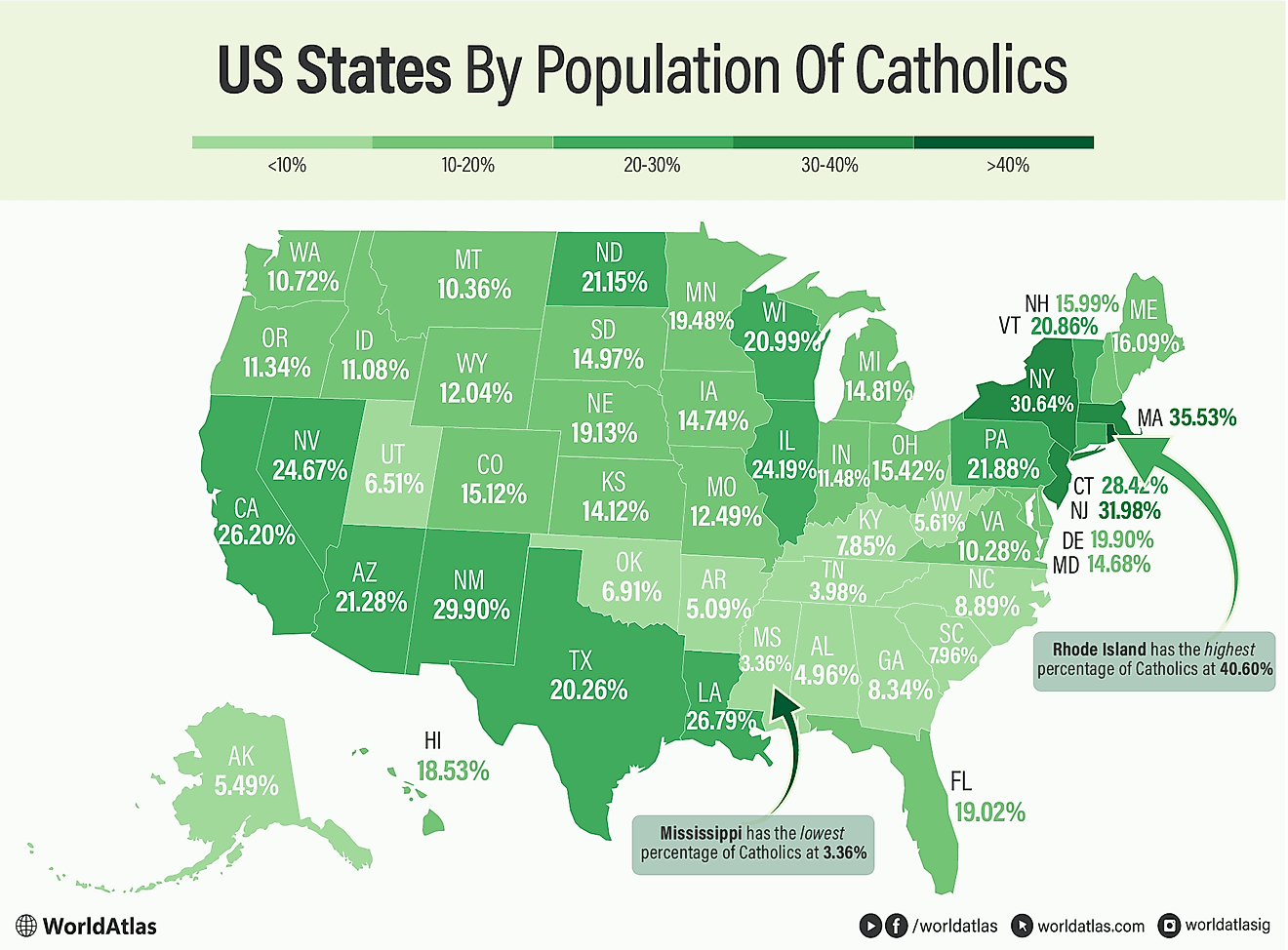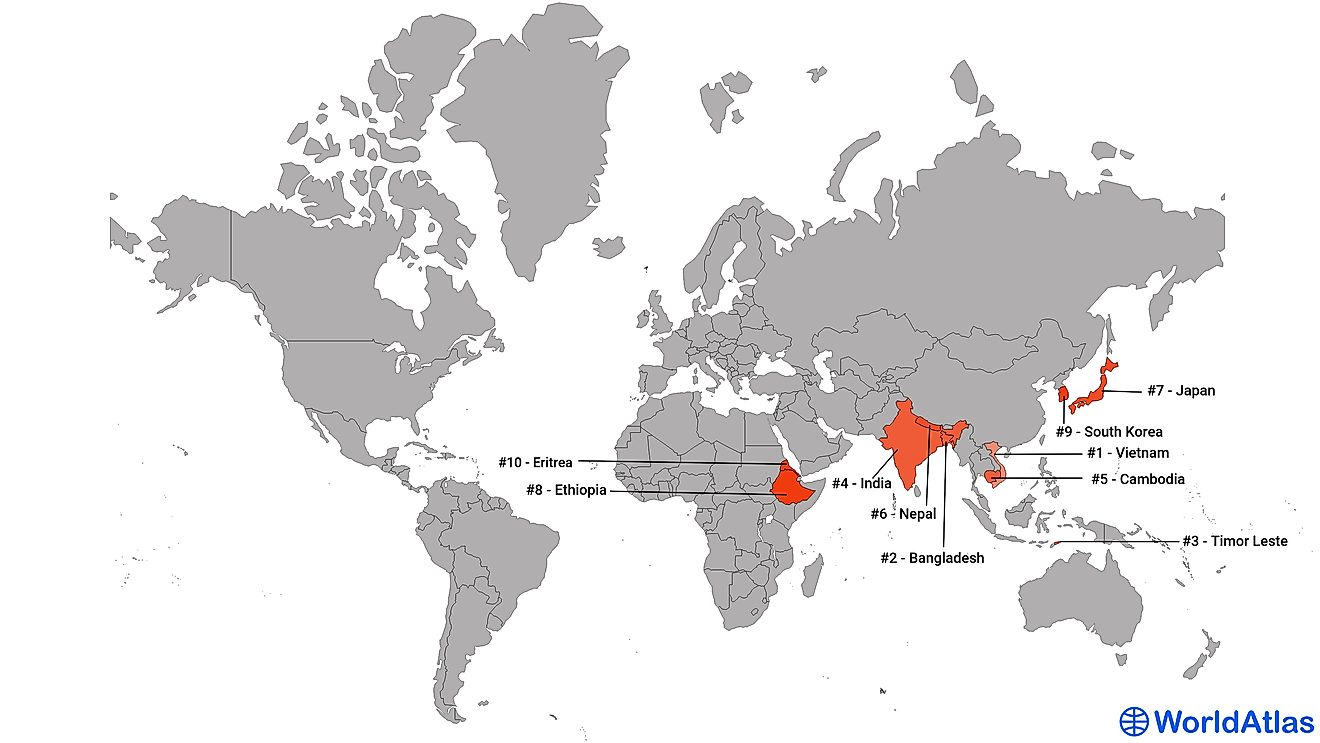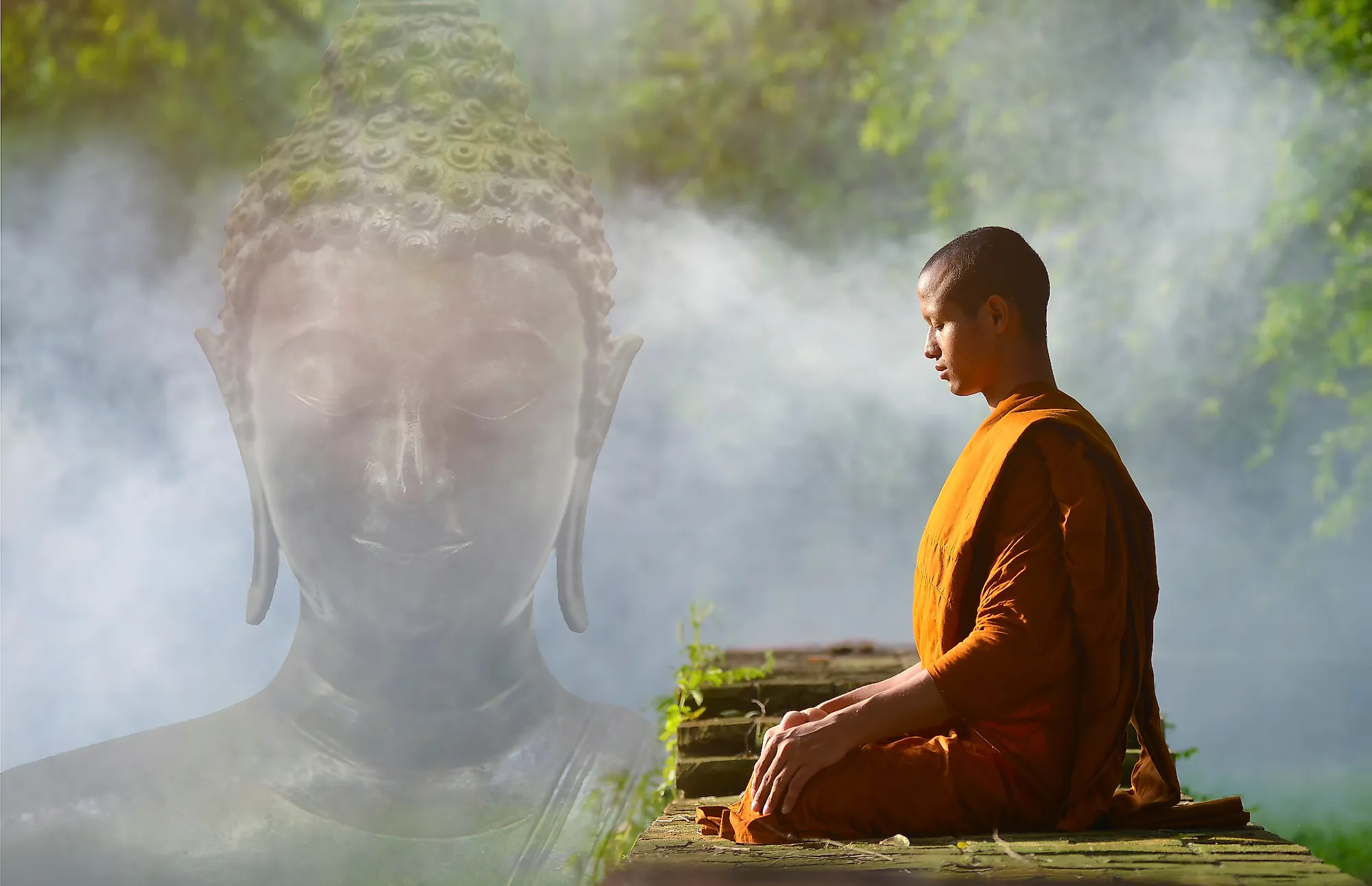
Buddhism
For more than two millennia, Buddhism has shaped how millions of people understand life, suffering, and the path to inner peace. Rooted in a search for enlightenment rather than devotion to a deity, it emphasizes mindfulness, compassion, and moral discipline as guides to human fulfillment. From quiet mountain monasteries to bustling urban temples, the influence of Buddhist philosophy can be found in art, architecture, and daily rituals across Asia and beyond.Buddhism is considered the fourth-largest religion in the world that originated in ancient India between the sixth and fourth centuries BCE. The religion is based on a series of teachings by Gautama Buddha. From India, Buddhism spread to major parts of Asia and the rest of the world. Currently, there are three major branches of Buddhism. These include Mahayana Buddhism, followed in China, Japan, Singapore, Taiwan, and Vietnam; Theravada Buddhism, practiced in Cambodia, Laos, Myanmar, Sri Lanka, and Thailand; and Tibetan Buddhism, followed in Mongolia, Nepal, Tibet, Bhutan, parts of Russia, and northern India. There are also many subsects of Buddhism, such as Nichiren Buddhism, Zen Buddhism, and Tendai Buddhism. Followers of Buddhism are called Buddhists, and today, there are more than 535 million Buddhists worldwide.
Beliefs Of Buddhism

Buddhism encompasses a wide range of traditions and spiritual practices rooted in the teachings of Siddhartha Gautama, known as the Buddha. At its heart lies the quest to overcome dukkha, or suffering, and to achieve enlightenment, or nirvana, a state of liberation from the endless cycle of birth, death, and rebirth. Buddhists believe this journey is guided by the cultivation of wisdom, ethical conduct, and mental discipline through meditation.
The Buddha’s core teachings, collectively called the Dhamma, include the Three Universal Truths, the Four Noble Truths, and the Noble Eightfold Path. The Four Noble Truths explain the reality, origin, and cessation of suffering, and describe magga, the path leading to its end. This path, symbolized by the eight-spoked Wheel of Dhamma, calls for Right View, Right Intention, Right Speech, Right Action, Right Livelihood, Right Effort, Right Mindfulness, and Right Concentration. Underpinning these teachings are the principles of karma, the moral law of cause and effect, and the Middle Way, a balanced approach to life that avoids extremes of self-indulgence and self-denial.

Buddhists believe in the cycle of rebirth, in which living beings are continually reborn into new forms according to their past actions, known as karma. In Theravada tradition, existence can occur within six realms: those of heavenly beings, demi-gods, humans, animals, hungry ghosts, and hellish worlds. The goal of spiritual practice is to break free from this cycle by attaining enlightenment.
Buddhists follow a wide range of sacred writings. Theravada Buddhists revere the Tipitaka, or Pali Canon, which preserves the earliest teachings of the Buddha. Mahayana Buddhists study additional scriptures known as the Mahayana sutras, while followers of Tibetan or Vajrayana Buddhism include Tantric texts and later philosophical works. Together, these writings form the foundation for Buddhist philosophy and practice across different cultures.
Brief History Of Buddhism

According to early Buddhist teachings, about 2,500 years ago, Siddhartha Gautama, who would later become known as the Buddha, was born to King Suddhodana and Queen Maya in the Lumbini region of present-day Nepal. The young prince spent his early life in the nearby city of Kapilavastu, surrounded by luxury and comfort.
As he grew older, Siddhartha became deeply troubled by the realities of sickness, aging, and death that existed beyond palace walls. At the age of twenty-nine, he renounced his royal life to seek a path that could end human suffering. Tradition holds that he encountered four symbolic sights: a sick man, an old man, a corpse, and a wandering ascetic, which revealed to him the impermanence of worldly existence. After years of meditation and self-denial, he realized that neither indulgence nor extreme asceticism led to peace. Choosing what he called the Middle Way, Siddhartha meditated beneath a Bodhi tree in Bodh Gaya, India, where he finally attained enlightenment, or nirvana, and became known as the Buddha, the Enlightened One.
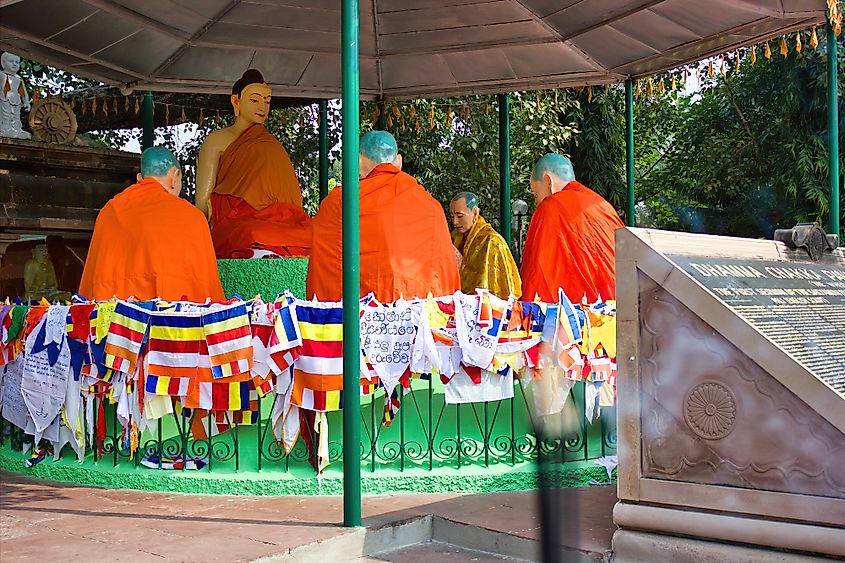
For the next forty-five years, Gautama Buddha shared his teachings on the path to enlightenment with disciples and followers across northern India. After his passing around 483 BCE, his followers preserved his words through oral traditions that formed the foundation of early Buddhist schools.
In the third century BCE, the Mauryan emperor Ashoka the Great adopted Buddhism and declared it a guiding faith of his empire. Under his patronage, monasteries, stupas, and pillars inscribed with the Buddha’s teachings were built throughout India. Ashoka also sent missionaries across Asia, helping spread Buddhism to Sri Lanka, Central Asia, and eventually China. Over time, these early efforts allowed Buddhism to flourish far beyond its Indian origins and take root in diverse cultures throughout the world.
Buddhism Today
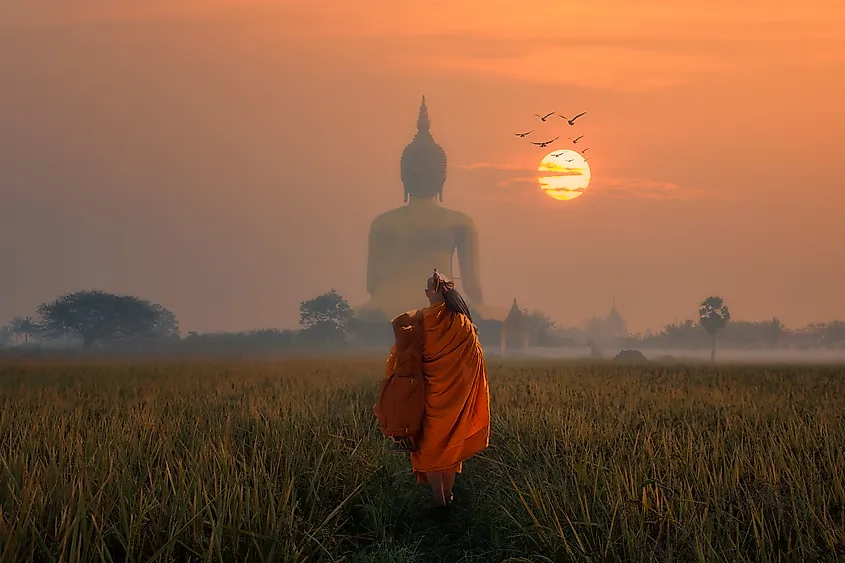
Buddhism remains one of the world’s major faiths, with more than 535 million followers, or about seven percent of the global population. Most Buddhists live in Asia, where the religion first took root and continues to shape culture, philosophy, and daily life. The largest Buddhist populations are found in China, Thailand, and Japan, followed by Myanmar, Sri Lanka, Vietnam, and Cambodia.
China is home to the world’s largest number of Buddhists, estimated at around 244 million people. Thailand follows with roughly 64 million, where Buddhism is practiced by nearly the entire population. Japan ranks third, with about 46 million Buddhists integrated into a rich blend of traditional and modern practices.
Other nations with significant Buddhist communities include Myanmar, Sri Lanka, Vietnam, Cambodia, South Korea, India, Malaysia, Taiwan, Laos, Nepal, Indonesia, and the United States. Across these regions, Buddhism continues to evolve, adapting to contemporary life while remaining deeply rooted in the teachings of compassion, mindfulness, and the pursuit of enlightenment.
10 Countries With The Highest Number Of Buddhists
| Rank | Country | Estimated Buddhist population (2010) | % of world Buddhist population |
|---|---|---|---|
| 1 |
China |
244,130,000 |
50.1% |
| 2 |
Thailand |
64,420,000 |
13.2% |
| 3 |
Japan |
45,820,000 |
9.4% |
| 4 |
Myanmar |
38,410,000 |
7.9% |
| 5 |
Sri Lanka |
14,450,000 |
3.0% |
| 6 |
Vietnam |
14,380,000 |
2.9% |
| 7 |
Cambodia |
13,690,000 |
2.8% |
| 8 |
South Korea |
11,050,000 |
2.3% |
| 9 |
India |
9,250,000 |
1.9% |
| 10 |
Malaysia |
5,010,000 |
1.0% |
